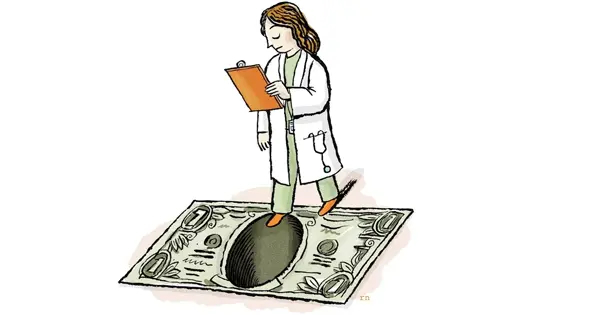Investing your Money
Dear Friend,
I hope you’re having a great week! As for me, I’ve been on night shifts this week (again, I know), so by the time you’re reading this, I’ll just be waking up to prepare for my final shift.
Earlier this week, I had dinner with a good friend who studied economics at university and now works in the city. During our conversation, she asked me what I was currently investing in. When I admitted that I wasn’t investing at all, but simply keeping my money in a current account, she was genuinely shocked. She quickly lost faith in me and took the time to walk me through how I should be managing my finances and investing my money.
After reflecting on our conversation and talking to a few other medic friends, I realised that I’m not alone in leaving my money in the bank to gradually erode. It’s not surprising – many of us focus on maths and sciences in school, and financial literacy isn’t exactly a topic we cover in medical school. However, this lack of financial awareness can have serious consequences down the line, especially given how high inflation rates are right now.
Let’s put it this way: Imagine you have £50,000 in your current account. If you don’t add or take anything out, the number stays the same. But, with inflation running at 3%, the value of that £50,000 is actually worth 3% less in real terms after a year. If this continues for several years, the impact becomes much more significant, and you can see how your money slowly loses its purchasing power.
Additionally, having all your savings in one account isn’t ideal for security reasons. If someone were to steal your debit card, they could easily empty your account, leaving you with nothing.
So, this week, I wanted to share a few basic tips on how to start using your money more effectively — or at the very least, ensuring it’s not just quietly eroding away in the bank.

Open a savings account
The first step I would recommend is opening a savings account. Unlike current accounts, savings accounts typically offer higher interest rates. While the return might not be enormous, it’s certainly better than earning nothing. Additionally, your money remains fairly accessible when you need it, and having a savings account also provides extra protection in case your debit card is stolen. Interest rates usually range from 1% to 4%, depending on the bank and the term, so at least your money will start generating some returns. The best part? Opening a savings account takes just about 5 minutes, making it an easy and quick step. However, do keep in mind that any interest earned is subject to tax at your income tax rate, meaning the actual returns might not be as high as they initially seem.
Open an Individual Savings Account (ISA)
If you haven’t already, consider opening an ISA. These tax-free accounts allow your money to grow without being taxed on the interest or returns. An ISA is a special type of savings account that gives you the opportunity to save and invest money without paying tax on the interest or investment gains you earn. The key benefit is that you don’t pay tax on the money you make from the account, which means you keep more of your earnings.
There are a few different types of ISAs, depending on how you want to use the money:
Cash ISA: This is like a regular savings account, but the interest you earn is tax-free. It’s a good option if you want to keep your money safe and easy to access.
Stocks & Shares ISA: This lets you invest in stocks, bonds, or other assets. While there’s more risk involved, you also have the potential to earn higher returns compared to a Cash ISA.
Each tax year (from April 6 to April 5 the following year), you can put up to a set limit of money into your ISAs. For the 2024/2025 tax year, the limit is £20,000. This means you can put up to £20,000 across all your ISAs combined, but you can’t exceed that
One of the best parts of an ISA is that any interest, dividends, or capital gains you earn on your money aren’t taxed. For example:
- If you have a savings account earning 2% interest, the bank would usually take some tax off your earnings. But in an ISA, the full 2% is yours to keep.
- If you invest in stocks through a Stocks & Shares ISA and make a profit, you don’t pay any tax on that profit (capital gains tax is usually applied outside of an ISA).
- Annual Limit: The £20,000 cap only resets once a year, so you can’t keep adding money beyond that amount.
- Risk: With a Stocks & Shares ISA, your investments could go up or down, so there’s some risk involved.
Summary
I don’t want to overload you with information, but by doing these 2 steps, you will have started your journey to some financial maturity. And the more you read and shop around, the more options you will discover. I just wish I had started 8 years sooner, but better late than never.
Hope you have a nice week!
Drug of the week
Capecitabine
Capecitabine, sold under the brand name Xeloda among others, is a anticancer medication used to treat breast cancer, gastric cancer and colorectal cancer.
Capecitabine is metabolised to 5-FU which in turn is a thymidylate synthase inhibitor, hence inhibiting the synthesis of thymidine monophosphate (ThMP), the active form of thymidine which is required for the de novo synthesis of DNA
The dihydropyrimidine dehydrogenase (DPD) enzyme is responsible for the detoxifying metabolism of fluoropyrimidines, a class of drugs that includes capecitabine
Those with partial or complete DPD deficiency have a significantly increased risk of severe or even fatal drug toxicities when treated with fluoropyrimidines.

A Brain Teaser
A 46-year-old man attends his GP with worsening vision.
He reports that his vision has recently become more blurry, especially when reading. He has no eye pain, redness, diplopia or systemic symptoms.
You measure his visual acuity on a Snellen chart and find it to be 6/12 bilaterally.
Which of the following steps is most suitable to investigate for a refractive error?
A: Cardiff acuity test
B: Dilation with 0.5% tropicamide
C: Slit lamp examination
D: Use of a LogMar chart
E: Use of a pin-hole occluder
Answers
The answer is E – pin hole occluder
The correct answer is the use of a pin-hole occluder. If decreased visual acuity is caused by refractive error then pin-hole acuity will be better than unaided acuity.
The Cardiff Acuity Test and LogMar chart are alternative methods for testing visual acuity and will not identify the underlying cause of reduced visual acuity as being refractive error.
Slit lamp examination is useful for identifying a number of eye abnormalities including cataracts, retinal detachment, macular degeneration, corneal injury and vascular problems, but is not the best way to identify a refractive error.
Dilation with 0.5% tropicamide or lens decentration will not help to identify refractive error.



